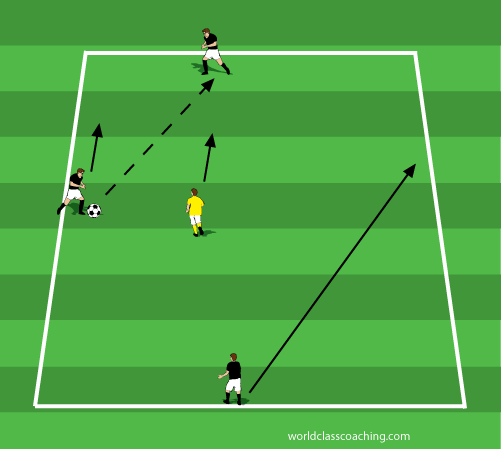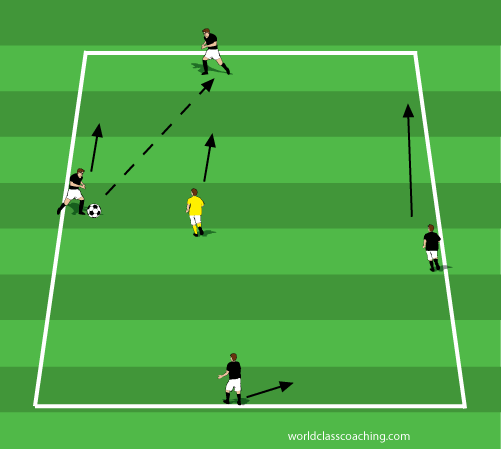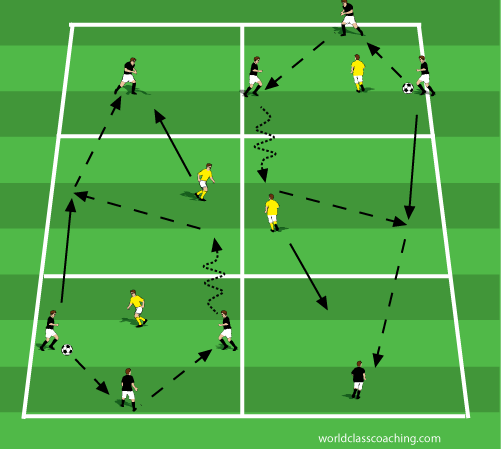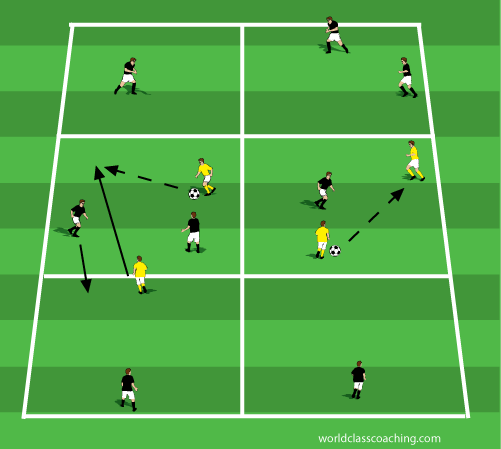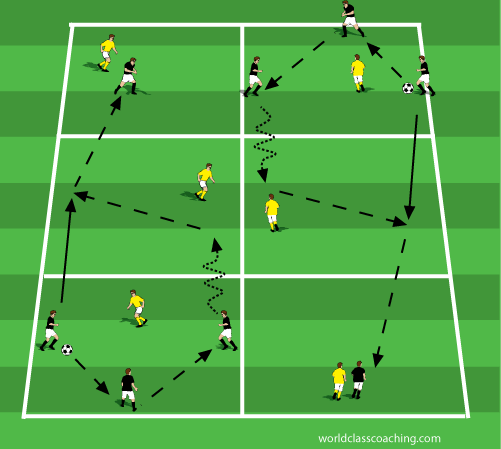Most coaches I know use some variation of a 5 v 2 keep away game in a limited area. I've never liked 5 v 2 as a teaching tool because I have always felt that it was too static. Anson Dorrance did a great demonstration at our International Seminar a few years ago where he showed us the coaching points they use at UNC. One of the most important was to move closer to the player with the ball using an open body position. This makes the game more dynamic but still falls short of what I feel is a good teaching environment.
I prefer to use a 3 v 1 keep away game because it requires the players to move in order to provide a passing option on both sides of the ball. This requirement means that the players have to be more aware of space, pressure and support than in the more traditional 5 v 2. It also means that the player with the ball has to improvise if the support doesn't arrive before the pressure. These aspects make the 3 v 1 game more game related than 5 v 2.
The 3 v 1 game can be too challenging for younger or less experienced players. When I run into this situation I will regress the practice to 4 v 1. When this is necessary I always make sure that the players understand that they are not to stand in the corners. They should be moving between the cones to provide support for the player with the ball. My other issue with keep away games is that they often don't translate to the real game. Non-directional possession games in isolation will not teach the players how to possess the ball and then attack with it.
This is a game that I have used with teams as young as U10 and as old as U19. As the players progress technically and tactically you can add complexity that will teach them new concepts and require greater precision and speed. The basic rules are simple: The three attacking players in the first grid must make three passes before they can move into the middle grid. The player that dribbles out of the first grid is supported by another player. Their goal is to get the ball to the attacking player in the last grid as soon as possible. If the defender in the middle grid tries to stop the direct ball to the attacker, the dribbler passes to the supporting player who can then play to the attacker. Once the ball reaches the attacker, the dribbler and supporting player move into the final grid followed by the defender and the pattern begins again.
If one of the defenders wins the ball and can keep it in the grid then they move it to the middle grid and play 2 v 1 against the player who lost the ball. If the ball goes out of any one of the grids then the ball is returned to the attacking team and they try to complete three passes.
Once this becomes easy for the attackers then you can add a defender to the last grid so that the attacker has to work harder to receive the ball from the players as they move through the middle grid.
Do you have ideas of how this could be progressed further? Do you have a way to progress the traditional 5 v 2 game to make it more functional?

